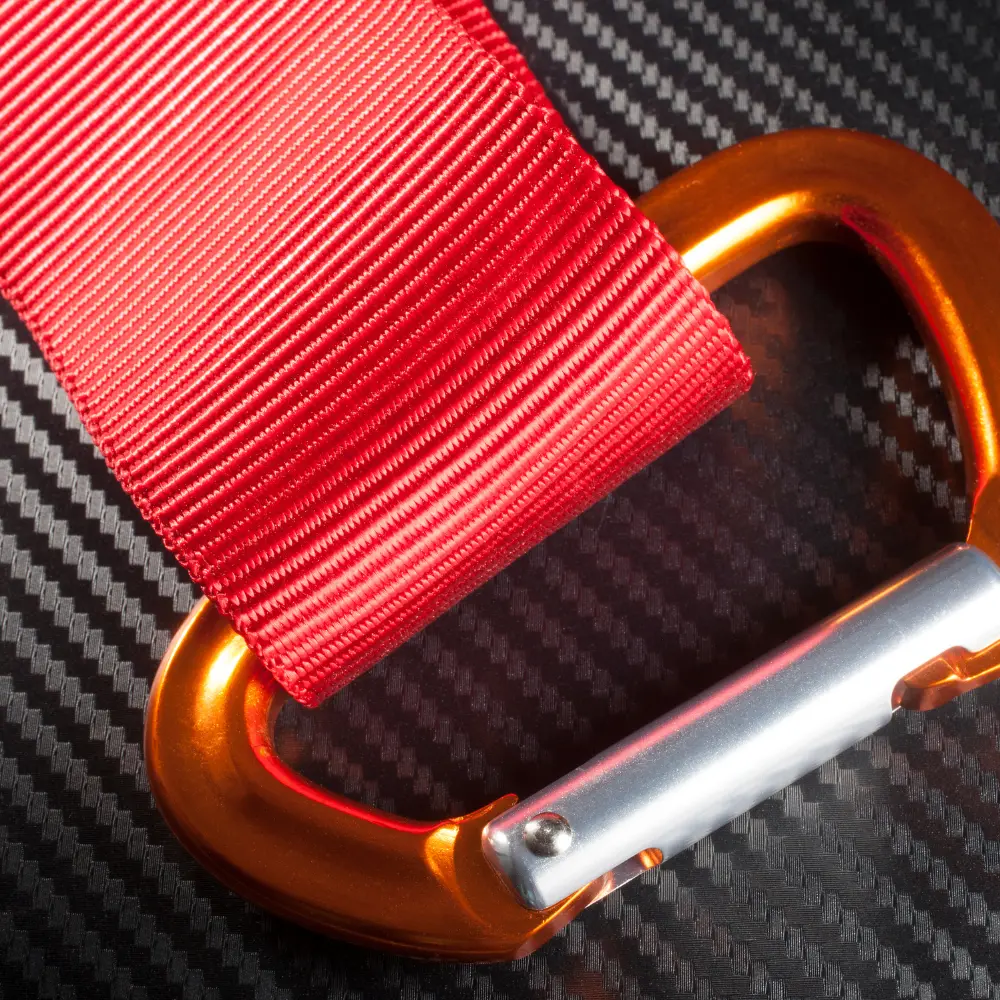- Local: (516) 346-4636
- Toll-Free: (800) 886-6060
- Fax: (516) 346-4366
- Email: kflynn@nationalwebbing.com
 Have you ever compared two similar products but felt unsure which one is the best fit for your project? That’s precisely what many manufacturers experience when deciding between nylon webbing and polypropylene webbing. Both are strong, reliable, and frequently used in industries like pet accessories, outdoor gear, and military applications. However, choosing the wrong type can result in wasted material, unsatisfactory performance, or even safety issues. In short, knowing the distinctions between nylon and polypropylene webbing is critical for matching each product to its ideal purpose.
Have you ever compared two similar products but felt unsure which one is the best fit for your project? That’s precisely what many manufacturers experience when deciding between nylon webbing and polypropylene webbing. Both are strong, reliable, and frequently used in industries like pet accessories, outdoor gear, and military applications. However, choosing the wrong type can result in wasted material, unsatisfactory performance, or even safety issues. In short, knowing the distinctions between nylon and polypropylene webbing is critical for matching each product to its ideal purpose.
This question comes up regularly at National Webbing Products (NWP), given that nylon and polypropylene have unique advantages. We aim to guide customers toward the best option based on load requirements, environment, cost, and more. The following sections compare these two materials head-to-head, highlight key factors for different use cases, and explore how NWP helps you make the most informed choice possible.
When first looking at nylon and polypropylene webbing, it can be easy to assume they’re interchangeable. Yet, several important details separate them—especially regarding strength, water resistance, and overall feel. Beginning with strength, nylon typically boasts a higher tensile rating, making it popular in applications involving heavy loads or frequent tugging (e.g., harnesses and cargo tie-downs). Meanwhile, polypropylene performs competently under moderate tension but isn’t intended for extreme stress.
Both materials also diverge in how they handle moisture. Polypropylene remains relatively unaffected by water and dries quickly, which is handy for products that might be submerged or exposed to wet environments. While durable, nylon can absorb moisture and stretch slightly when damp, though it remains robust once dried. Add in each material’s reaction to UV exposure—polypropylene often retains color vibrancy better under long sunlight—and the final picture of “what’s better” starts to depend heavily on the end use.
The differences come down to load-bearing capacity, water absorption, and reaction to UV exposure. Understanding these core traits is the foundation for deciding whether nylon or polypropylene webbing best aligns with your product goals.
Despite polypropylene’s appeal, nylon webbing stands out when load requirements, abrasion resistance, or overall durability dominate the priority list. Consider heavy pet leashes for large breeds, equestrian equipment experiencing near-constant tension, or commercial backpacks built to carry substantial weight. In these applications, the higher tensile strength of nylon helps prevent sudden snaps or fraying over time. Additionally, many manufacturers appreciate how nylon endures repeated friction without excessive wear—an essential factor in belts or gear that rub against other surfaces.
Even though nylon can soak up water, NWP offers heavy or medium-weight nylon webbing in multiple weaves that remain highly functional after drying. These weaves hold up in rough conditions like hiking trails or mountainous terrains. Another overlooked benefit is the material’s comfortable texture; nylon webbing can feel slightly smoother against skin or fur, enhancing user comfort in items like dog harnesses or shoulder straps for bags. That combination of reliability, feel, and consistent performance often cements nylon as a go-to solution in many demanding settings.
Nylon webbing excels whenever high tensile strength, abrasion resistance, and user comfort are paramount. Manufacturers looking for top-tier stability in load-bearing or friction-heavy circumstances frequently turn to NWP’s nylon options.
Conversely, polypropylene webbing proves its worth where moisture control, buoyancy, or colorfastness outweighs the need for extreme strength. For instance, water-related scenarios—like boat covers, pool equipment, or kayak tie-down straps—benefit from polypropylene’s resistance to mold and quick-drying nature. Because it doesn’t soak up water, polypropylene webbing stays light and avoids prolonged dampness that might cause discomfort or additional strain on the product.
Price sensitivity can also tip the scales in polypropylene’s favor, especially for large production runs that don’t require heavy-load capabilities. Coupled with its vibrant color retention under sunlight, it’s a smart pick for items that stay outdoors without facing intense tugging or heavy dragging. While not as strong as nylon in absolute terms, polypropylene serves consistently for moderate-duty tasks where cost-effectiveness and water resistance are primary considerations.
Polypropylene delivers solid performance in environments saturated with water or sunlight, offering easy maintenance and a lower total cost. It’s less about ultimate strength and more about an affordable, flexible solution suitable for moderate loads and wet conditions.
The question “Which is better, nylon or polypropylene webbing?” ultimately hinges on matching material properties to your specific needs. National Webbing Products takes pride in helping customers navigate these distinctions so that each project gets the right balance of strength, water resistance, colorfastness, and budget. Whether it’s a collar for a service dog expected to pull frequently or a boat tarp strap requiring minimal dryness time, we offer guidance tailored to your unique application.
NWP’s manufacturing capabilities also mean a wide selection of widths, weaves, and colors for both nylon and polypropylene. For instance, if a design might encounter occasional heavy loads but also spend time around water, we can recommend a certain gauge of nylon and possibly add a specialized finish for improved moisture resistance. Every order benefits from decades of experience, ensuring that “better” is defined by how well the material meets or exceeds the demands of its final environment.
The bottom line is that the “better” webbing depends on whether load capacity or water resistance (and cost) takes priority. By working with NWP, businesses can confidently choose the optimal option, knowing we’ll back them with consistent quality, fast delivery, and expert insight into each material’s best uses.